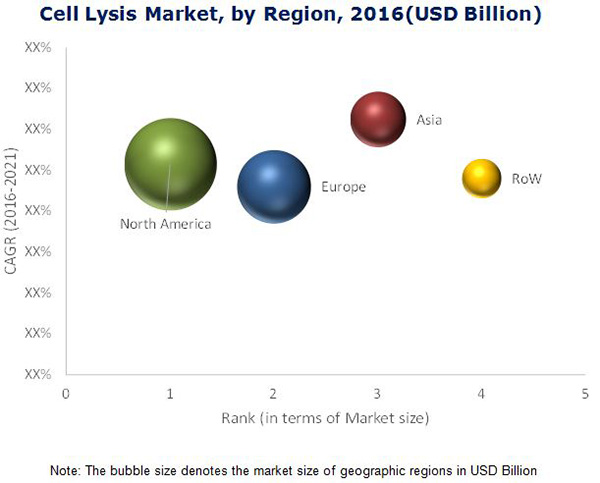The report aims to provide insights into the global cell lysis market. It provides valuable information on the product, type of cell, and end-users, in the market. Furthermore, the information for these segments, by region, is also presented in this report. Leading players in the market are profiled to study their product offerings and understand the strategies undertaken by them to be competitive in this market.
According MarketsandMarkets Research – The Global Cell Lysis Market is expected to reach USD 3.84 Billion, at a CAGR of 10.3%.
Major Market Growth Drivers:
- Increasing Government Funding for Research
- High Prevalence of Diseases
- Expanding Biotechnology and Biopharmaceutical Industries
- Growing Focus on Personalized Medicine
The global cell lysis market consists of various products that are used for extraction of nucleic material, proteins and other cell content. This market is driven by several factors such as increasing government funding for research, high prevalence of diseases, expanding biotechnology and biopharmaceutical industries, and growing focus on personalized medicine. High potential growth in emerging markets has opened an array of opportunities for the market.
Browse 84 market data Tables and 41 Figures spread through 135 Pages and in-depth TOC | Request Research Sample Pages:
https://www.marketsandmarkets.com/requestsampleNew.asp?id=260138321

cell lysis market
On the basis of product, the Cell Fractionation Market is segmented into consumables and instruments. The consumables segment is expected to account for the largest share of the global market. Consumables include reagents and kits, beads, and disposables. Reagents and kits are further classified into enzymes, detergent solutions, and other reagents and kits. Enzymes are mostly used for chemical cell disruption and form major portion of the reagents and kits market. The instruments segment comprises sonicators, homogenizers, and other instruments. Sonicators account for largest share of the instruments market owing to its increasing use in cell fractionation. However, high cost of sonicators hinders its growth.
On the basis of type of cell, the cell lysis market is segmented into mammalian cells, microbial cells, and other cells. The mammalian cells segment is expected to account for the largest share of this market, owing to rising investments by governments and companies for cell-based research. Rising prevalence of diseases such as cancer, HIV/AIDS urges a demand for advanced treatment options and development of cell therapies. This increases the market growth of mammalian and microbial cells.
Download PDF Brochure:
https://www.marketsandmarkets.com/pdfdownloadNew.asp?id=260138321
Geographically, the Cell Fractionation Market is dominated by North America, followed by Europe, Asia, and the Rest of the World (RoW). Growth in the North American segment is primarily driven by increasing aging population, and rising government funding in the North American countries.
The major players in the cell lysis market are Beckman Coulter, Inc. (U.S.), Becton, Dickinson and Company (U.S.), Bio-Rad Laboratories, Inc. (U.S.), Cell Signaling Technology, Inc. (U.S.), F. Hoffman-La Roche AG (Switzerland), Merck KGaA (Germany), Miltenyi Biotec (Germany), QIAGEN N.V. (Netherlands), Qsonica, LLC. (U.S.), and Thermo Fisher Scientific Inc. (U.S.).

